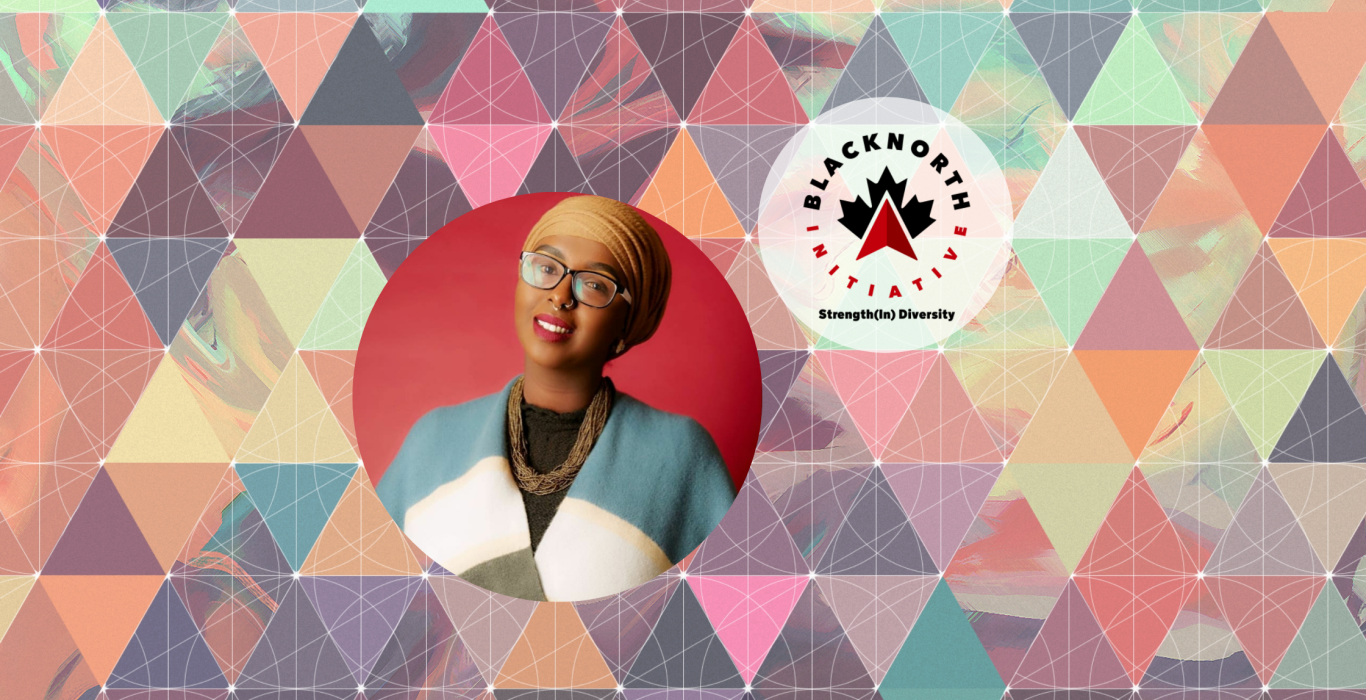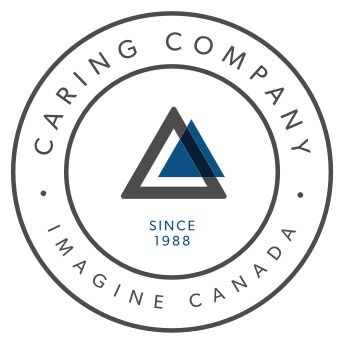This post is based on an interview with Dahabo Ahmed-Omer, Executive Director of the BlackNorth Initiative, a charity with a mission to end anti-Black systemic racism throughout all aspects of our lives through a business-first mindset. It contains lessons for nonprofits looking to create systemic change through changing the behaviour of the private sector and advice for companies looking to make real progress on racial equity in their organizations. All quotes are directly from the interview and some may be lightly edited for clarity. Any interpretation is the work of the author.
In Summer 2020 in the wake of worldwide protests to combat anti-Black systemic racism, the BlackNorth Initiative was founded by Bay Street entrepreneur and philanthropist Wes Hall to counter anti-Black racism in corporate Canada by setting measurable targets to track progress.
With the initiative, BlackNorth unveiled the CEO Pledge, a public commitment by CEOs that their companies would follow seven specific actions around addressing anti-Black racism, including: setting goals that 3.5% of executive and board roles need to be held by Black leaders, that Black students need to make up at least 5% of the companies’ student workforce, and that 3% of donations and sponsorships be directed to Black communities. Some of the goals are for the short-term, and others like the transformation of the workforce and donations are to be achieved by 2025.
The pace at which Canada’s leading companies have signed on has been swift. The initiative launched with more than 200 signatories in 2020. The Financial Post reported that by February 2021, the 400 signatories had a market value of $1.3 trillion. By October 2021, the initiative had almost 500 signatories.
The BlackNorth Initiative showcases the power and challenges of working with companies to drive systemic change across Canada’s business ecosystem.
Measurement is key to systemic change
“What we’re trying to do here at BlackNorth is develop a performance measurement framework that will be able to assess the way that the pledge has been implemented into each company and if it’s successful,” explains Dahabo Ahmed-Omer, Executive Director of the initiative. “And there are more companies than ever that are collecting data.”
A 2021 investigation by the Globe and Mail highlighted both the opportunity and the challenges of the BlackNorth Initiative in an article summarizing that “companies show little progress on diversity”. The journalists attempted to survey the 209 initial signatories of the pledge and 105 companies completed the Globe survey.
Of the companies that responded, a small number showed progress, with 15% of responding companies indicating they had increased the number of Black employees in their ranks over the previous year while 14% had increased the number of Black executives. A broader group of responding companies (26%) increased the overall number of employees that identified as Black, Indigenous, and/or people of colour.
But the Globe research also highlighted how few companies had any sense of their position before signing on: just under half (46%) of the responding companies did not track the percentage of Black employees before the initiative, and 33% had not yet started as of July 2021.
Ahmed-Omer highlights that this ongoing measurement is critical to the success of the CEO pledge for its success over the long-term: "The accountability around measurement is so, so key to the achievement of racial equity."
But measuring the percentage of workers identifying as Black is just a first step: says Ahmed-Omer: “it’s also important that you’re collecting the right data. It’s not just about knowing the percentage of Black people in your workforce… but how they are doing, how they are perceived in their workforce, and the extent to which they are experiencing anti-Black racism.”
Ahmed-Omer says their organization is looking to help companies hit “the full scope” of measurement, including whether their employees “have equity, inclusion, opportunities for promotion, and opportunities to grow.”
Systemic change takes time
“The pledge is set up in such a way that it’s for five years. It’s incredibly important that we do this in an incremental way so that we see the shifts happen,” Ahmed-Omer notes.
And the measurement framework that companies have begun to set up is key to understanding how these shifts are happening.
“We’re just one year in, and there’s only so much that can be done in one year,” emphasizes Ahmed-Omer. “This anti-Black racism has been in our society for hundreds of years and it’s going to take time to make progress.”
Ahmed-Omer explains, “we’ve barely scratched the surface” of the opportunity to make change.
One sign of the potential, sometimes still unmet, is the number of companies that have made long-term plans to help address some of these issues. For example, in The Globe and Mail study, 87 of the initial signatories had developed strategic plans on meeting diversity and inclusion goals, either before or after signing the pledge.
According to a separate survey of signatories conducted by the BlackNorth Initiative published in October 2021, 33% of signatories had a current strategic diversity and inclusion plan with related key performance indicators while another 46% had one in progress. Similarly, only 30% had a diversity and inclusion data collection platform or system, while another 37% were currently building one.

Executive Director at
The BlackNorth Initiative
Change requires CEO buy in
Looking at the long-term time horizons and big commitments needed to make the changes, Ahmed-Omer highlights that the BlackNorth team emphasizes that this has to be a commitment endorsed by the most senior leadership: “We want the person signing this to be a CEO or President. It’s important it’s the CEO signing it, not the company. It’s a CEO pledge because we want the leader to be the one that is accountable to the pledge.”
Ahmed-Omer notes they have had numerous occasions when less senior staff have been interested in signing the pledge, but the organization has always stuck to this core principle: “It may be less senior staff that are responsible for executing it, but the commitment has to come from the top because the accountability is there.”
In addition to the commitment from the CEO, all signatories agree to “create and share strategic inclusion and diversity plans with their board of directors” as one of the core goals of the pledge.
Developing a playbook for change
“What’s the point in signing a pledge if you’re not going to get support on executing on the pledge?” asks Ahmed-Omer in explaining tools and supports the organization is working on to help signatories. “It’s important we do it together in partnership.”
From the outset, one of the seven goals that every signatory commits to is to “share best and unsuccessful practices.” And from the beginning, the BlackNorth Initiative has been hosting webinars where companies present their initiatives, workshops to present tools and best practices around many facets of diversity, equity, and inclusion, and they started a peer-to-peer program where signatories are matched with each other to work together on developing their diversity and inclusion strategies.
“Over the last year, we’ve created The Playbook, which is a 200-page tool that acts as a framework and skeleton for a diversity and inclusion strategy.” The playbook was co-developed with many of their signatories and created in collaboration with Boston Consulting Group. “It was developed with a lot of experts and strategists in the field to ensure it was effective in any environment but that it looked at it through the lens of Black, Indigenous, and People of Colour communities. It’s great if you’re developing a strategy, but if you’re not doing it through the lens of the communities that are most impacted, it won’t have any weight.”
The Playbook explains the current state of inequality for Black Canadians and creates a framework to understand equity along six pillars (pipelines, leadership, compensation, procurement, portfolio, and contribution), and illustrates how to baseline, prioritize and act along each of these six pillars. It includes worksheets, a template list of actions, and case studies.
The Racial Equity Playbook includes tools and research on how to implement racial equity goals and “contains a list of tools and tactics that organizations can use to fulfill their diversity, equity, and inclusion goals - becoming more equitable corporate citizens.” The Playbook was launched in November 2021 and is available by request here.
Philanthropy is critical for change
One of the elements of the pledge that has sometimes received less attention is the emphasis on changing how companies do philanthropy. The pledge comes with a commitment to give 3% of total donations and sponsorships to Black communities by 2025.
This is to address “the lack of resources for Black-led initiatives,” says Ahmed-Omer. She points to the recent research by the Foundation for Black Communities that found that a set of the largest public and private foundations in Canada they reviewed only gave 0.13% of total grants to Black-serving organizations and only 0.03% to Black-led organizations.
“If a corporation is going to sign up to this pledge, it’s important to invest in these Black-led initiatives, because it’s going to take this collective effort to support these organizations that are really under-resourced,” explains Ahmed-Omer. “There are these incredible initiatives and programs and ways to eliminate anti-Black racism, but unfortunately they‘re not resourced. So it was important to ask corporate Canada, ‘what can you do to support these initiatives?’”
Among companies, 37% of respondents to the BlackNorth Anniversary survey had a donations/sponsorship program supporting Black-led/Black-serving programs and initiatives, while another 26% indicated creating this was in progress. How much organizations are currently allocating to Black-led/Black-serving organizations is unknown.
Approaching the work with kindness
‘I’ll say that the biggest thing that I've learned is that we have to do this work with kindness,” says Ahmed-Omer. “As a Black Muslim woman, and I’ve faced very much layered and compounding barriers. But I understand that in this work when it comes to anti-racism, and inclusion and equity, we have to be humble, we have to be kind, and not shame and blame anyone, because that doesn’t get us anywhere…”
Ahmed-Omer explains some of the lessons from the work:
“There have been moments of enlightenment that happen with everyone I’ve spoken to where we share experiences and thoughts, and there have been some very uncomfortable conversations that happened, but we’re better today for it.
And the one thing I’ve learned is that we have to do the work with kindness, because it’s not easy, and it’s difficult, and it impacts people’s livelihoods and chances at life.
Anti-Black racism kills, and it has killed many of our communities, so we’re looking to ensure that we can do this work, and be kind to each other, but save the lives of people that are being impacted by this.
The last advice I would say is more than anything, focus on the behaviour change. Because if you start to change how you behave, and everyone around us does that shift, that’s where real change can be.”
Next steps
For companies interested in learning more about the BlackNorth Initiative, consider sharing the pledge with your colleagues, or for those already involved, download the Playbook to figure out strategies to implement racial equity in your organization.
For companies and individuals working in community investment, corporate social responsibility, or diversity and inclusion spacing, Imagine Canada is working on a research study to understand diversity efforts in the profession and among organizations working in the space. To keep updated, sign up here.
For other recent work by Imagine Canada highlighting how companies and nonprofits work together to drive change in the post COVID-19 world, please see Partnering for Impact: From crisis to opportunity, featuring nine other case studies highlighting unique ways companies and nonprofits are working together to build a better Canada.
The content in this case study was made possible thanks to the support of our National Partner, RBC Foundation. Imagine Canada would also like to thank our Knowledge Partner, Blackbaud.




